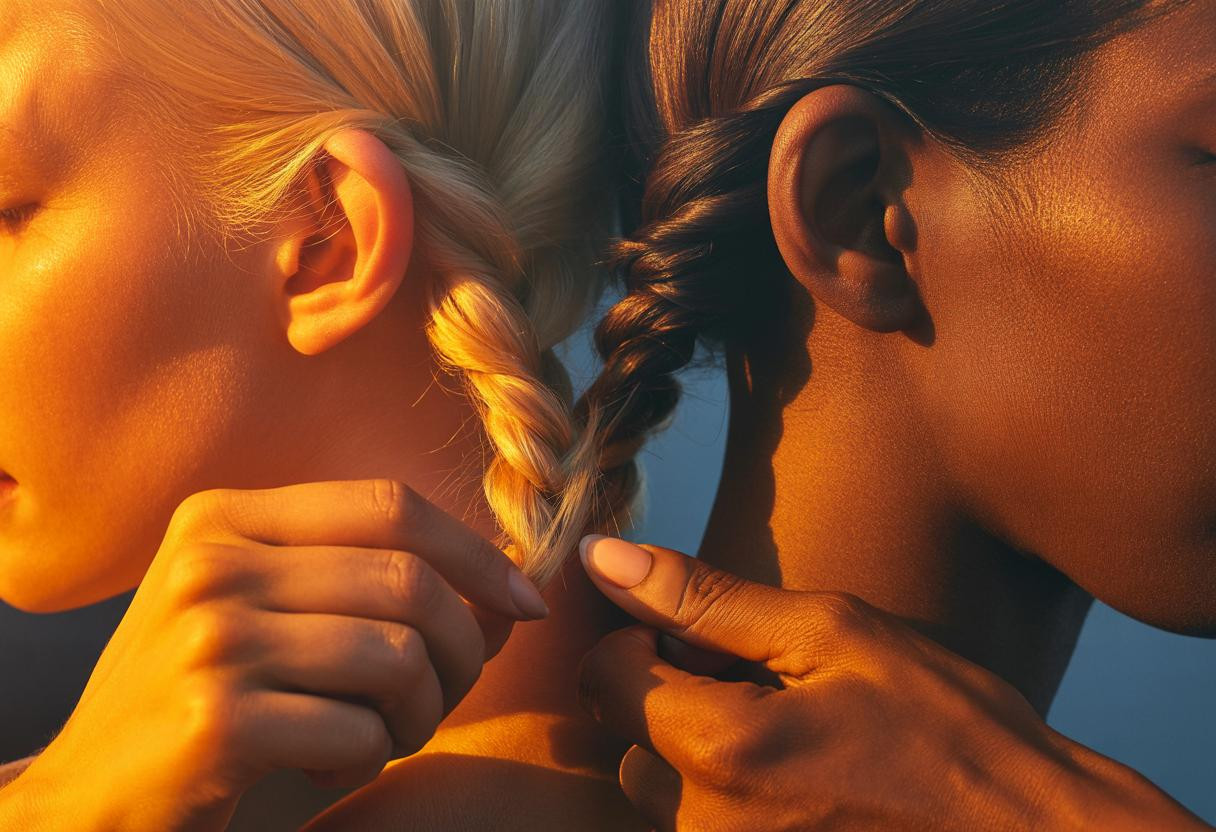A simple TikTok video sparked a cultural firestorm that reveals deeper truths about identity, respect, and the complex dynamics of sharing traditions across racial lines. When white creators began wearing braids traditionally associated with Black culture, the platform erupted into heated debates that expose fundamental questions about cultural ownership in our interconnected world.
The historical roots that make this debate so personal
African braids aren’t just hairstyles—they’re centuries-old communication systems that encoded everything from marital status to tribal lineage. These intricate patterns served as visual languages, with specific styles marking rites of passage and preserving family histories across generations.
For Black communities, braids represent resilience against oppressive systems that historically criminalized natural hair textures. The psychological weight of seeing these meaningful traditions reduced to trending aesthetics creates genuine pain that extends far beyond surface-level styling choices. Understanding the ancient history and cultural significance of braids illuminates why this controversy strikes such a deep chord.
How social media transformed cultural conversations
TikTok’s algorithm amplified confrontational content, creating viral moments where Black creators directly challenged white users wearing braids. These videos garnered millions of views, but the tone shifted dramatically over time.
Early content featured direct confrontations and boundary-setting, with creators using phrases like “this is not for you.” However, recent trends show a pivot toward educational approaches, with many Black influencers choosing to teach cultural context rather than police individual choices.
The psychology behind the backlash
The intensity stems from economic and social inequities where Black women face discrimination for wearing natural styles in professional settings, while white individuals receive praise for the same looks. This double standard creates understandable frustration when cultural elements are celebrated on some bodies but penalized on others.
Colorism adds another layer, as lighter-skinned individuals often navigate these conversations differently than their darker-skinned counterparts. The intersection of race, beauty standards, and how color choices impact personal identity and self-expression creates complex dynamics that resist simple solutions.
Finding pathways beyond polarization
The most promising developments involve collaborative education rather than cultural gatekeeping. Some creators now partner across racial lines to share historical context while acknowledging the beauty of cultural exchange when done respectfully.
Economic justice emerges as a practical solution—supporting Black braiders and businesses rather than mass-market appropriation. This approach addresses systemic inequities while allowing for appreciation that benefits origin communities.
What genuine appreciation looks like
Respectful cultural engagement involves understanding history, supporting Black businesses, and acknowledging origins. It means recognizing that some elements carry sacred or deeply personal significance that may not be appropriate for casual adoption.
The conversation is evolving toward nuanced frameworks that consider context, intent, and impact rather than blanket prohibitions. This shift reflects growing cultural literacy and the recognition that identity exists on a spectrum, especially for multiracial individuals navigating multiple heritages.
Moving forward with mutual understanding
The most constructive dialogues now focus on education over confrontation, with platforms hosting verified cultural experts and community leaders. Success stories emerge when people approach these conversations with genuine curiosity rather than defensiveness.
Future trends point toward increased accountability in beauty marketing, with brands consulting community leaders and ensuring economic benefits reach origin cultures. This represents a shift from individual policing to strategic approaches to personal style and cultural expression that consider broader systemic impacts.
The deeper lesson hidden in hair debates
This controversy ultimately reveals how personal choices intersect with historical trauma and ongoing inequities. The path forward requires moving beyond binary right-wrong frameworks toward building systems that honor cultural origins while allowing for the natural evolution of human expression in our interconnected world.
